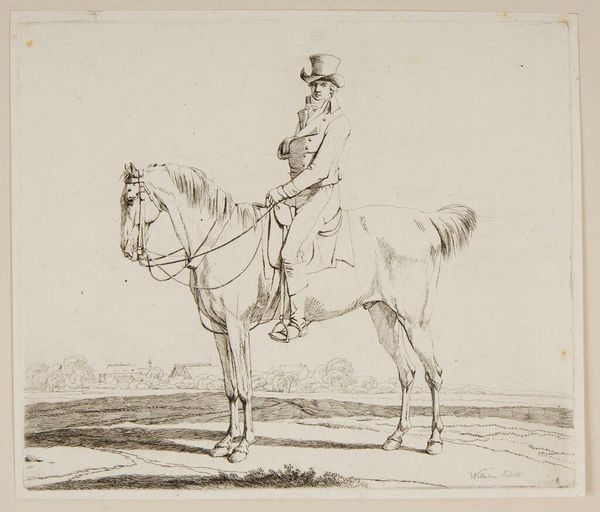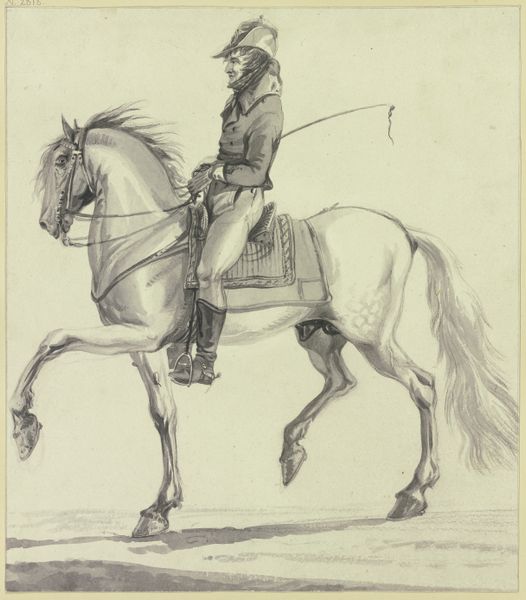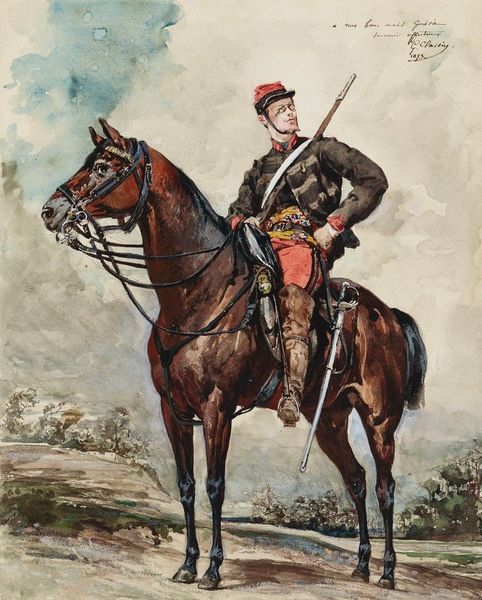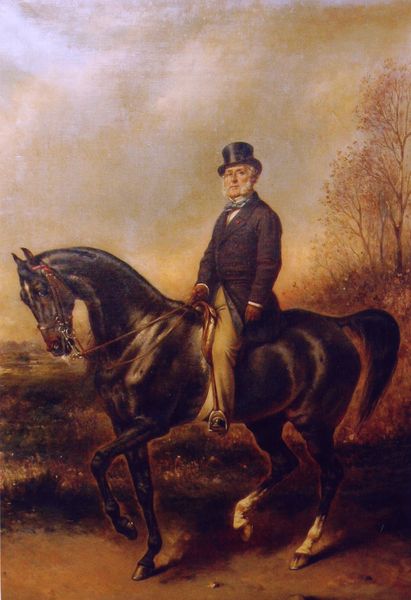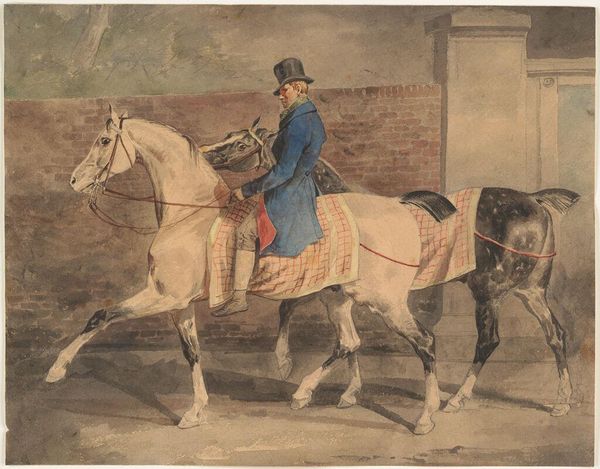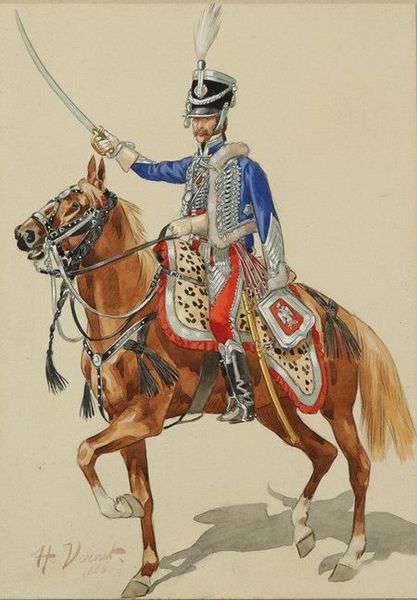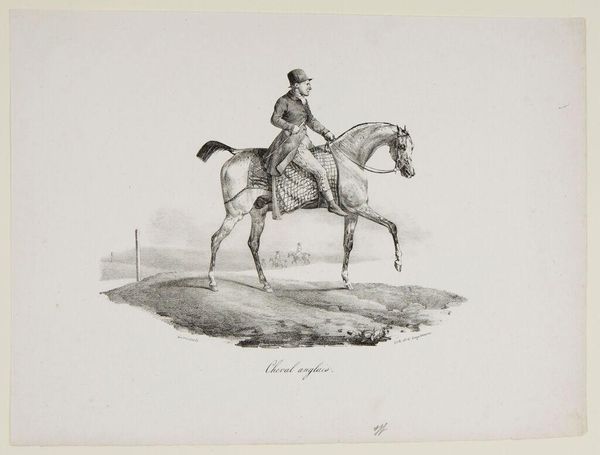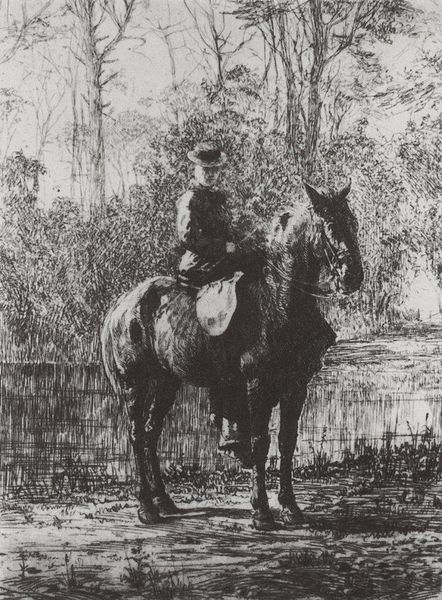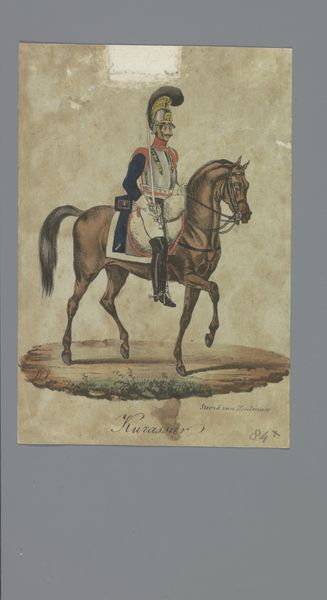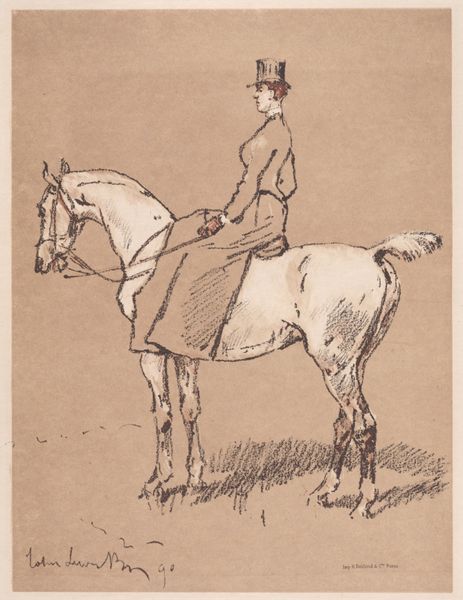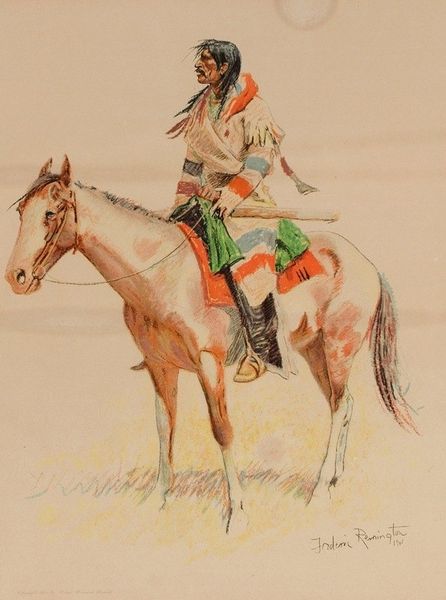
painting, watercolor
#
portrait
#
animal
#
painting
#
impressionism
#
landscape
#
oil painting
#
watercolor
#
male-portraits
#
horse
#
watercolour illustration
#
watercolor
Copyright: Public domain
Curator: Let’s turn our attention to Henri de Toulouse-Lautrec’s watercolor painting, "The General at the River," created around 1882. Editor: It’s surprisingly light and airy for a military subject. The watercolor technique gives it a delicate, almost dreamlike quality, doesn’t it? Curator: Precisely! Lautrec’s choice of watercolor is quite deliberate. Consider how it contrasts with the expected weight and gravitas associated with military portraiture. It subverts the genre. Editor: I’m struck by how the general and his horse dominate the composition, yet they are almost dissolving into the landscape. The muted palette contributes to this effect, blurring the lines between subject and setting. Curator: Notice too, how the quick, expressive brushstrokes suggest a sense of movement. He is a wealthy subject, and he's consuming space on the material plain of France. Editor: Yes, the fluidity of the watercolor medium seems perfectly suited to capture the fleeting moment of the general and horse paused by the river. The composition pushes the human subject to one side, so that his location is equally, if not more, important to the balance. Curator: His social context is critical to understand. The military held great power, and here we find it diffused. We understand the politics behind the consumption of pigments at the time. Editor: The materiality speaks to how the washes create depth, using a reductive layering of form, the composition becomes about revealing and obscuring. Curator: He's a commodity and using the watercolor helps him feel less imposing. The texture of the paper also enhances this ephemeral quality. Editor: Thinking about it, it’s remarkable how the intrinsic properties of watercolor – its transparency and ability to blend – add a unique layer to our interpretation. Curator: I agree, and it also pushes us to remember who had access to what kinds of labor that resulted in art during that moment in France. Editor: I think the key formal elements invite such contextual perspectives on power.
Comments
No comments
Be the first to comment and join the conversation on the ultimate creative platform.


